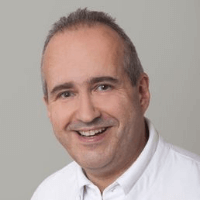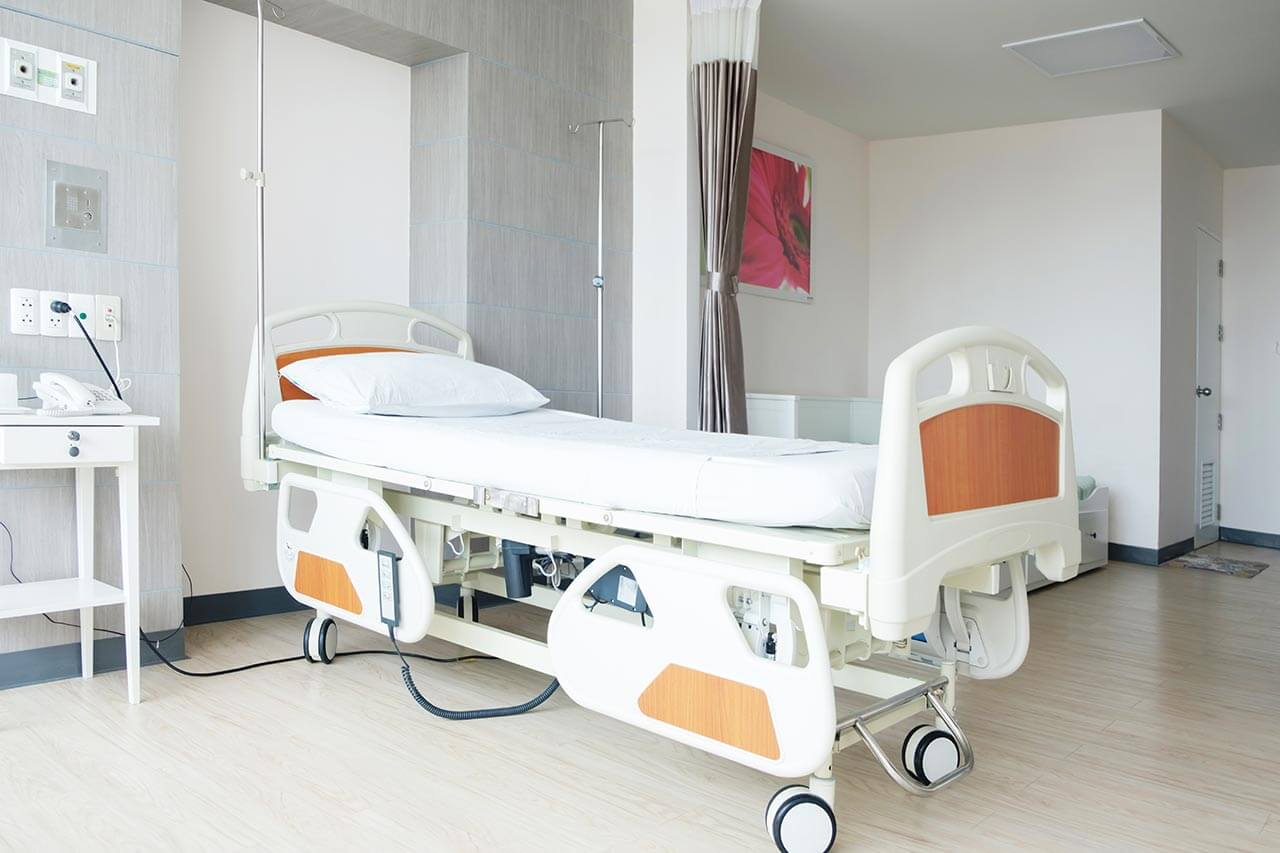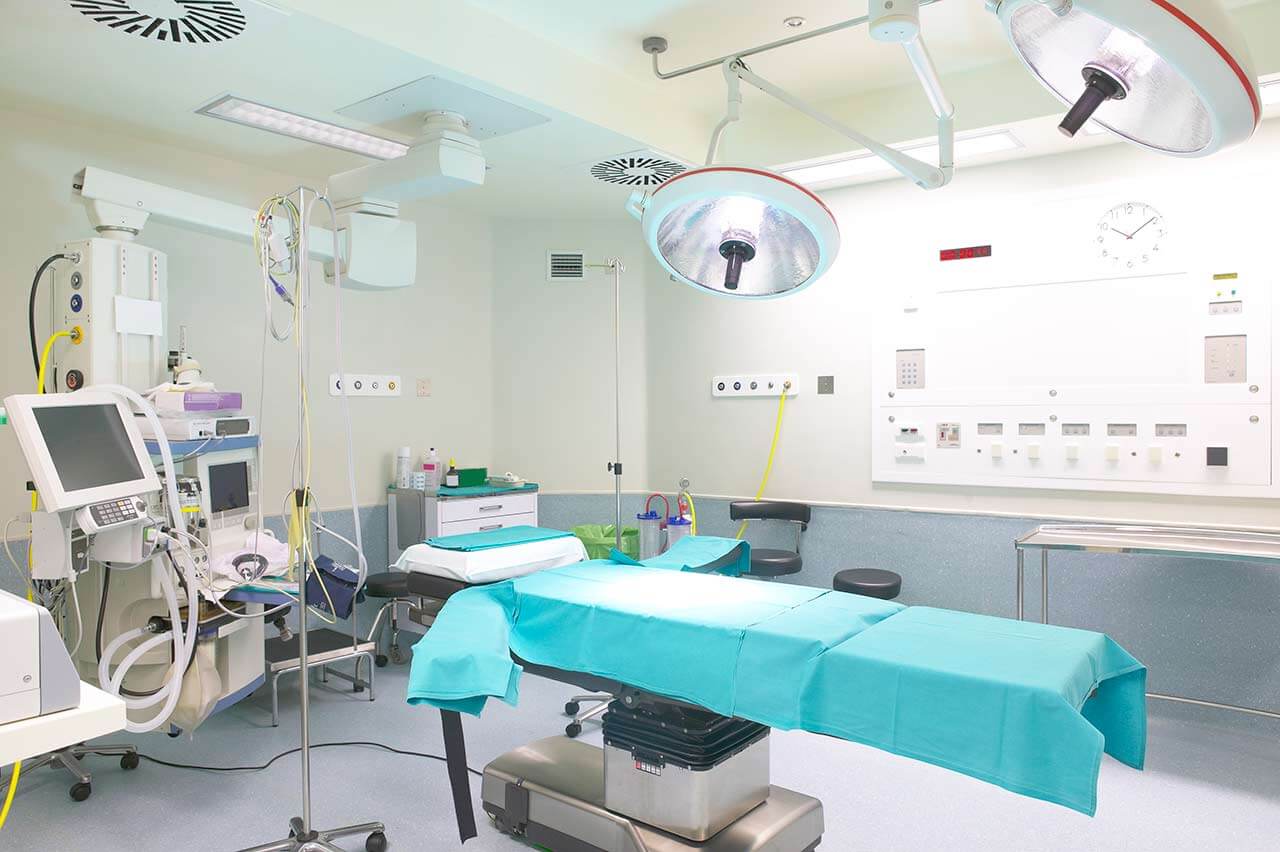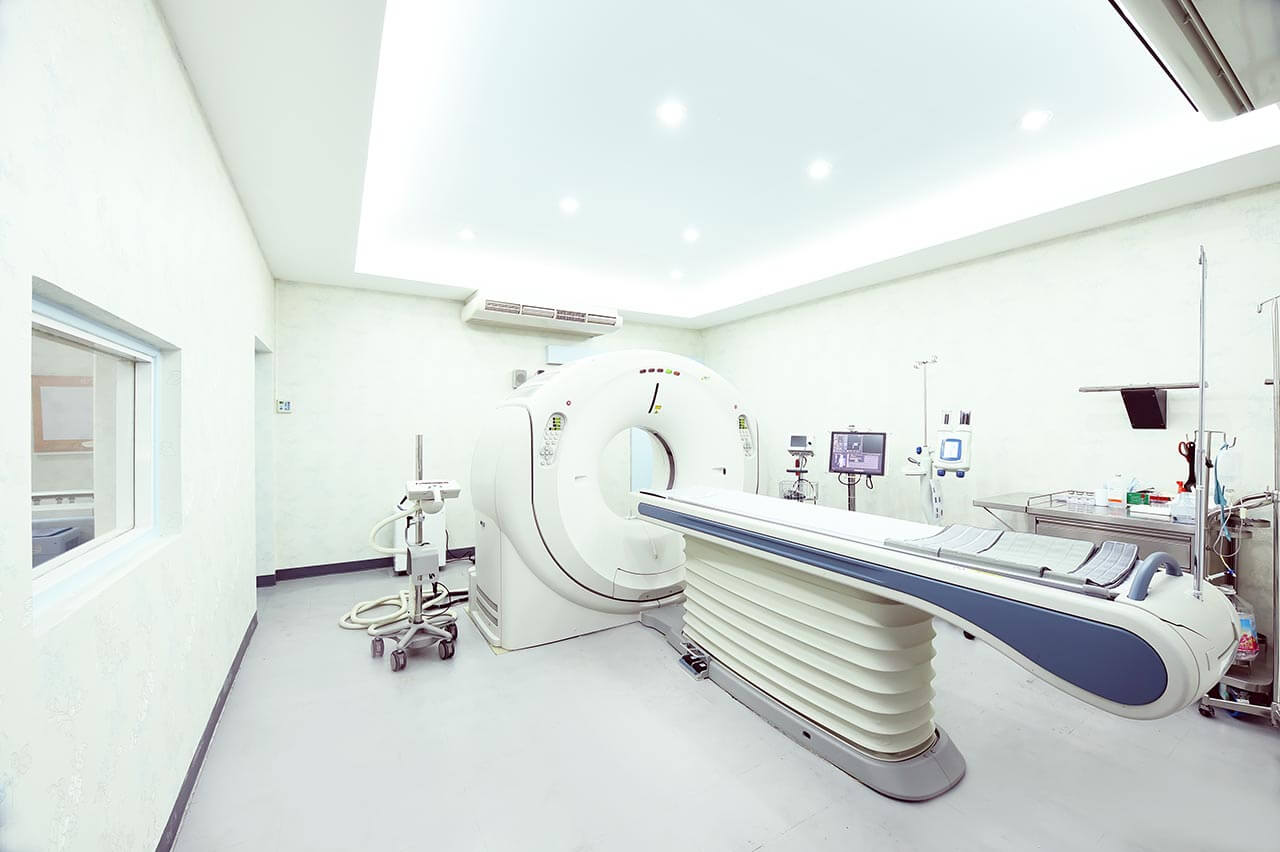
The program includes:
- Initial presentation in the clinic
- history taking
- general clinical examination
- X-ray/ MRT
- neurological examination
- electromyogrphy
- electrophysiology
- general blood analysis
- preparation of pre-operational standard
- chirurgical treatment
- symptomatic therapy
- full board clinic stay for up to 4 days
- cost of required medications
- nursing staff services
- elaboration of further recommendations
Required documents
- Medical records
- Ultrasound of the elbow (if available)
Service
You may also book:
 BookingHealth Price from:
BookingHealth Price from:
About the department
The Department of Adult and Pediatric Traumatology, Orthopedic Surgery, Spinal Surgery and Foot Surgery at the St. Antonius Hospital Eschweiler offers its patients accurate diagnostics and high-quality treatment of the full range of diseases of the musculoskeletal system. The department provides both conservative and surgical treatment of congenital and acquired orthopedic diseases. The medical facility is certified as a regional Trauma Center, so the department's specialists can offer patients of all ages effective treatment for injuries of any severity. The department also has endoCert certification, which confirms the excellent quality of surgery for partial and total knee, hip and shoulder replacement. An equally important focus of the department's work is the treatment of spinal diseases, the excellent results of which are awarded with the certificate of the German Society for Spine Surgery. The department's doctors apply their clinical experience and professional skills to provide optimal treatment and eliminate mobility restrictions for each patient.The department is headed by Dr. med. Oliver Heiber.
The doctors of the certified Endoprosthetics Center perform modern surgical interventions for partial and total knee, hip and shoulder replacement, including revision surgery to replace previously implanted prostheses. The doctors working in the department have over 30 years of experience in this field. In the course of a comprehensive diagnostic examination, the specialists assess the degree of joint damage, the advisability of the surgical procedure and possible contraindications. If the patient has no contraindications to surgical treatment, the preparatory stage begins – planning the intervention using computer programs. The decisive role in the success of treatment is also played by the optimal selection of the prosthesis, and therefore doctors use in their practice only high-quality endoprostheses that enjoy an impeccable reputation in the world market. Joint replacement surgery is performed using minimally invasive techniques, through several small skin incisions. Minimally invasive surgery is not inferior to classical open surgery in terms of its efficiency, but at the same time it has a number of undeniable advantages. These are mild pain, minimal risks of infection and postoperative complications, rapid recovery of mobility after the intervention and a short period of hospitalization.
The department also successfully performs arthroscopic interventions on the knee, hip and shoulder joints. Arthroscopic interventions can be performed both for diagnostic purposes, when non-invasive imaging diagnostics does not provide the required information for the diagnosis, and for therapeutic ones. During the procedure, the doctor makes one or two small skin incisions through which he inserts an arthroscope – a tube with a diameter of 4-5 mm with magnifying lenses and optical fiber. With an arthroscope, the doctor can examine the internal structures of the joint and carry out the necessary therapeutic manipulations by introducing special instruments through additional skin incisions. The department's medical team mostly performs arthroscopic interventions for impingement syndrome, frozen shoulder, rotator cuff tear, shoulder dislocation, pathological lesions of the articular lip and hip cartilage, meniscal and cruciate ligament injuries, pathological lesions of the knee cartilage, etc. The department's specialists perform thousands of arthroscopic procedures every year, so the patients can be sure of their high efficiency and safety.
One of the most important focuses for doctors of the medical facility is the treatment of spinal diseases and injuries. The department mostly admits patients with spinal disc herniation, spinal stenosis, facet arthrosis, spondylolisthesis, spinal fractures, including osteoporotic ones, chronic back pain, etc. The team of specialists in this medical field has in its arsenal both conservative and surgical treatment methods. Conservative therapeutic methods include infusion therapy, infiltration therapy, physiotherapy, manual therapy and others. Should surgery be required, the preference is given to minimally invasive surgical techniques. The treatment regimen is developed for each patient individually.
The department's service range is complemented by the treatment of congenital and acquired foot diseases. Whenever possible, the doctors strive to achieve a cure for pathology using conservative methods (special physiotherapy methods, wearing corrective orthopedic shoes, etc.). If conservative therapy does not give the desired result, doctors decide to perform a surgical procedure. The department uses sparing minimally invasive or arthroscopic techniques, which reduce trauma to healthy tissues and exclude long-term postoperative recovery. The specialists of the medical facility achieve excellent results in the treatment of such foot diseases and deformities as hallux valgus, hallux rigidus, Morton's neuroma, hammer and claw toes, heel spur, osteochondritis dissecans, chronic ankle instability and others. After the operation, the patient undergoes rehabilitation measures for early mobilization (in cooperation with physiotherapists).
The department's key clinical focuses include:
- Conservative and surgical treatment of injuries of any severity in adults and children (within a certified Trauma Center)
- Conservative and surgical treatment of knee diseases
- Arthroscopic meniscus repair, including partial resection
- Arthroscopic and minimally invasive knee cartilage surgery
- Arthroscopic surgery for cruciate ligament replacement
- Minimally invasive surgery for patellar instability
- Conservative and surgical treatment of knee fractures
- Conservative and surgical treatment of hip diseases
- Arthroscopic and minimally invasive surgery on the cartilage of the hip joint and articular lip
- Conservative and surgical treatment of hip fractures
- Conservative and surgical treatment of shoulder diseases
- Arthroscopic surgery for impingement syndrome
- Arthroscopic surgery for frozen shoulder and extracorporeal shock wave therapy
- Arthroscopic surgery for rotator cuff tear
- Arthroscopic surgery for shoulder instability
- Conservative and surgical treatment of shoulder fractures
- Knee, hip and shoulder replacement surgery
- Partial replacement surgery
- Total replacement surgery
- Revision replacement surgery (for example, in case of prosthesis displacement, infection, etc.)
- Conservative and surgical treatment of spinal diseases
- Conservative treatment methods
- Infusion therapy
- Infiltration therapy
- Physiotherapy
- Manual therapy
- Surgical treatment methods
- Surgery for spinal disc herniation
- Surgery for spinal stenosis
- Facet joint denervation (for facet arthrosis)
- Surgery for spondylolisthesis
- Kyphoplasty for osteoporotic vertebral fractures
- Implantation of special fixation devices for vertebral fractures
- Correction of congenital or post-traumatic spinal deformities
- Conservative treatment methods
- Conservative and surgical treatment of foot diseases
- Conservative treatment methods
- Special physiotherapy techniques
- Wearing corrective orthopedic shoes
- Urgent care for foot injuries
- Surgical treatment methods
- Urgent surgical treatment of foot injuries
- Arthroscopic surgery for pathological lesions of the ankle cartilage
- Surgical repair of hallux valgus and hallux rigidus
- Surgical repair for incorrect position/deformation of the little toe
- Decompression for ankle impingement syndrome
- Arthrodesis
- Minimally invasive interventions for ankle joint cartilage lesions
- Partial upper ankle replacement surgery
- Ankle joint arthroscopy
- Injection therapy for ankle tendovaginitis
- Stabilizing ankle surgery
- Conservative treatment methods
- Other medical services
Photo of the doctor: (c) St.-Antonius-Hospital
About hospital
According to the prestigious Focus magazine, the St. Antonius Hospital Eschweiler ranks among the top medical facilities in North Rhine-Westphalia!
The hospital is a modern medical complex with 13 specialized departments. The hospital has more than 165 years of history, so it has long won an excellent reputation not only in Germany, but also in the European medical arena. In addition, the medical facility has the status of the Academic Hospital of the RWTH Aachen University, thanks to which it can offer patients the very latest and unique medical advances. The highly qualified medical staff of the hospital, consisting of more than 1,300 employees, is focused on high-quality medical services with due consideration of the personal needs and wishes of patients
The medical complex has 443 beds. More than 15,000 inpatients undergo diagnostics and treatment on an inpatient basis, while about 25,000 patients receive ambulatory medical care. The specialists of the hospital often provide diagnostic services and treatment to the patients from foreign countries.
The main areas of clinical practice of the medical facility include oncology, hematology, general and abdominal surgery, plastic surgery, hand surgery, vascular surgery, internal medicine, gynecology, urology and radiation oncology. Each area is represented by an experienced team of doctors and specially trained nursing staff, whose task is to provide the accurate diagnostics and the most effective treatment. The work of the medical staff is based on the use of modern technical resources, as well as classic and innovative treatment methods. The doctors from different medical specialties cooperate closely with each other, so the slightest details and characteristics of the patient's body are taken into account when planning and providing treatment. In addition, the medical staff is always open to personal communication with the patients, strives for their moral support on their way to recovery and surrounds them with care.
The outstanding achievements of the hospital and high treatment success rates are confirmed by the quality certificates of the German Cancer Society, the German Cardiac Society, the German Society of Vascular Surgery, the German Society of Hematology and Medical Oncology and the German Trauma Society. In addition, according to the famous Focus magazine, the hospital is recognized as one of the best medical centers in Germany specializing in the treatment of breast cancer, prostate cancer and cardiovascular diseases.
Photo: (с) depositphotos
Accommodation in hospital
Patients rooms
The patients of the St. Antonius Hospital Eschweiler live in cozy and light rooms. All the patient rooms are well equipped to make the patient feel as comfortable as possible throughout the entire period of hospital stay. The patient room includes an automatically adjustable bed, a bedside table, a wardrobe, a TV and a telephone. Each patient room has an ensuite bathroom with shower and toilet. Some patient rooms have specially designed bathrooms for disabled people. The patient rooms also have Wi-Fi.
If desired, the patient with his accompanying person can live in the enhanced comfort room. These patient rooms are additionally equipped with upholstered furniture, a mini fridge and a safe for storing valuables.
Meals and Menus
The patient and his accompanying person are offered tasty and healthy three meals a day: breakfast, lunch and dinner. Breakfast and dinner are served buffet style, while for lunch there is a choice of three set menus. If for some reason you do not eat all the foods, you will be offered an individual menu.
The hospital also has a cozy cafe with a large choice of salads, main courses, pizza, cakes and ice cream. Here you can enjoy aromatic coffee, delicious tea or soft drinks.
Further details
Standard rooms include:
Religion
The religious services are available upon request.
Accompanying person
During the inpatient program, the accompanying person can live with the patient in a patient room or a hotel of his choice. Our managers will help you choose the most suitable option.
Hotel
During the outpatient program, the patient can stay at the hotel of his choice. Our managers will help you choose the most suitable option.




